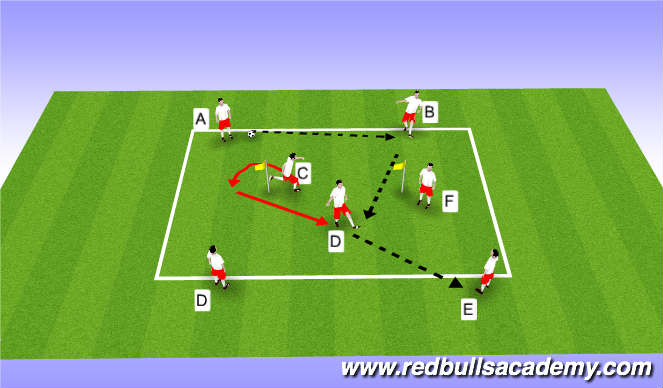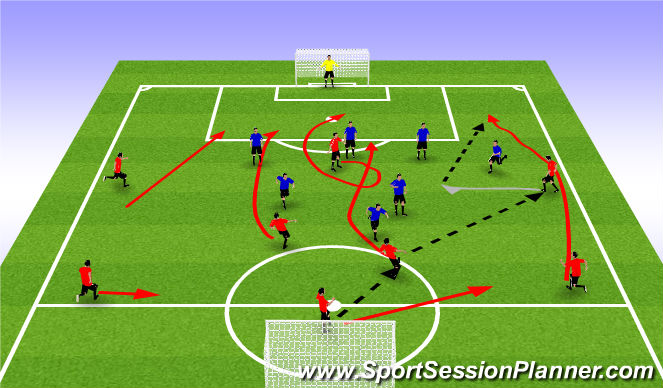

Meanwhile, their opponent has five players in the same area. In total, PSG has seven players engaged in the build-out with Neymar situating himself between the lines. Taking an example from PSG, we find seven players in front of a line of four opponents. As their defensive structure deteriorates, gaps for progression appear on both the horizontal and vertical axis. As we build-out of the back, the objective is to use a numerical superiority deep in our end of the pitch to draw the opposition, inviting them to press and become unbalanced. Moving these ideas into the team concept, we can see a clear application for establishing numerical superiorities in the way we initiate our attacks. That knowledge then forms his understanding of the game, shaping his approach and the way he processes sensory data. More importantly, he can understand it epistemologically by synthesizing his experience. Even a 5-year-old can see that having equal or greater numbers than the opponents is preferable to playing numbers down. It is, and, as I said, numerical superiority is the easiest to understand. That’s when the light bulb turned on: “because it’s easier to beat one person than two,” he said.įrom that moment on, he engaged 1v1, numerical equality and released the ball when 1v2. “Do you think it’s easier to beat both of them or just one?” I asked. “So there were more of them than you, ” I asked him. I asked him, “How many of them did you dribble into?” My audacious kid, who is very confident in his ability on the ball, was growing frustrated that he kept losing the ball when he attacked his two cousins in 1v2 scenarios. In a recent 2v2 game my 5-year-old son and I played against his two older cousins. Numerical superiorities – “There are more of us”


We’ll start off with the one that’s most easily understood, even by young children, numerical superiority. These actions are perfectly carried out within a group, be it small-sided or a larger scale, with constraints within the exercise to produce the desired learning experience.Īs we build through the four superiorities, I will present them within the attacking phases of play. The match tactics players learn come through preferential simulation situations, which is a way of constructing exercises through global tasks within open play. Therefore, when we speak of superiorities, we are addressing how a team creates advantages within the space phase. lo speaks of two types of spaces, the first of which is an intervention space, which is the space where a player carries out an action against an opponent, and a space phase, which is how the space away from the ball is occupied by teammates.The quotations are included because they offer the clearest means of communicating superiorities to our players, especially in the youth game. lo: 1) numerical (“there are more of us”), 2) qualitative (“we are better”), 3) socio-affective (“we understand each other better”) and 4) positional (“we are better positioned”).In this article, we will assume the four superiorities put forth by Professor Francisco Seirul What are superiorities?ĭepending on your influence, you’ll either argue there are four or five superiorities in football. An awareness of superiorities through the ecological dynamics and constraints presented in our sessions can achieve those ends. We want to develop smarter players who are capable of assessing the game, offer a proactive approach and are mentally alert as they seek solutions to the game’s problems. Rather than drawing up sessions at random, we, as coaches, want to identify the most important principles within our styles of play and our team’s tactics for upcoming matches, then design the session with those ideas and intentions in mind. When building sessions, it’s important to begin with the end in mind.

#TACTICAL SOCCER SLOTTED BALL RUNS INTO THE BOX HOW TO#
Working through the superiorities, this tactical analysis will frame them within a concrete situation with training activities to help players understand what superiorities are and how to construct them in the flow of the match. This article looks at both the theoretical concepts and practical applications of superiorities. In order to create more time and space on the ball, teams look to create superiorities across the pitch. For possession dominant teams, creating time and space to conduct attacks is often countered by defensively compact opponents.


 0 kommentar(er)
0 kommentar(er)
